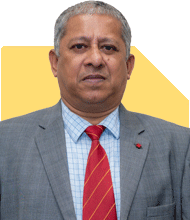41 Years Old, Seeking 20 Lakh return from SIP in 15 Years for Children's Education?
Ramalingam Kalirajan |10017 Answers |Ask -Follow
Mutual Funds, Financial Planning Expert - Answered on Jul 23, 2024
He has an MBA in finance from the University of Madras and is a certified financial planner.
He is the director and chief financial planner at Holistic Investment, a Chennai-based firm that offers financial planning and wealth management advice.... more

HI, I am 41 years old and want to start a SIP to give a return of 20 lakh in next 15 yrs for children education. which fund I should choose?
You aim to accumulate Rs. 20 lakh over the next 15 years for your children's education.
Starting a SIP is a smart way to achieve this goal.
Let's explore the best approach to meet your objective.
Investment Horizon and Risk Appetite
You have a long-term horizon of 15 years.
This allows you to take on more risk for potentially higher returns.
Equity mutual funds are suitable for long-term goals.
Types of Equity Mutual Funds
Large-Cap Funds: Invest in big, stable companies. Less risky but moderate returns.
Mid-Cap Funds: Invest in medium-sized companies. Moderate risk and returns.
Small-Cap Funds: Invest in smaller companies. High risk but high returns.
Flexi-Cap Funds: Invest across various company sizes. Balanced risk and returns.
Why Not Index Funds?
Index funds follow the market. They lack active management.
Actively managed funds aim to beat the market.
This offers potentially higher returns.
For your goal, actively managed funds are better.
Benefits of Regular Funds
Professional Management: Managed by experts.
Personal Guidance: Certified Financial Planner can guide you.
Better Performance: Regular monitoring and adjustments.
Choosing the Right Funds
Diversify across different types of funds.
This balances risk and reward.
A mix of large-cap, mid-cap, and small-cap funds is ideal.
Example Allocation Strategy
Large-Cap Fund: 40% for stability and steady growth.
Mid-Cap Fund: 30% for moderate growth.
Small-Cap Fund: 20% for high growth potential.
Flexi-Cap Fund: 10% for balanced growth.
Regular Monitoring and Review
Review your investments annually.
Adjust based on performance and changing market conditions.
Seek advice from a Certified Financial Planner regularly.
Benefits of SIP
Discipline: Ensures regular investment.
Rupee Cost Averaging: Buys more units when prices are low.
Compounding: Helps in wealth creation over time.
Why Avoid Direct Funds?
Direct funds lack personal guidance.
You miss out on expert advice.
Certified Financial Planners provide valuable insights.
Final Insights
Starting a SIP for your child's education is a wise decision.
Choose a mix of large-cap, mid-cap, small-cap, and flexi-cap funds.
Regularly review and adjust your portfolio.
Seek professional guidance to stay on track.
Best Regards,
K. Ramalingam, MBA, CFP,
Chief Financial Planner,
www.holisticinvestment.in
You may like to see similar questions and answers below
Ramalingam Kalirajan |10017 Answers |Ask -Follow
Mutual Funds, Financial Planning Expert - Answered on Jan 30, 2024
Prof Suvasish Mukhopadhyay |2742 Answers |Ask -Follow
Career Counsellor - Answered on Jul 31, 2025
Prof Suvasish Mukhopadhyay |2742 Answers |Ask -Follow
Career Counsellor - Answered on Jul 31, 2025
Dr Nagarajan J S K |2116 Answers |Ask -Follow
NEET, Medical, Pharmacy Careers - Answered on Jul 31, 2025
Dr Nagarajan J S K |2116 Answers |Ask -Follow
NEET, Medical, Pharmacy Careers - Answered on Jul 31, 2025
Dr Nagarajan J S K |2116 Answers |Ask -Follow
NEET, Medical, Pharmacy Careers - Answered on Jul 31, 2025
Dr Nagarajan J S K |2116 Answers |Ask -Follow
NEET, Medical, Pharmacy Careers - Answered on Jul 31, 2025
Dr Nagarajan J S K |2116 Answers |Ask -Follow
NEET, Medical, Pharmacy Careers - Answered on Jul 31, 2025
Nayagam P P |9752 Answers |Ask -Follow
Career Counsellor - Answered on Jul 31, 2025
Nayagam P P |9752 Answers |Ask -Follow
Career Counsellor - Answered on Jul 31, 2025
Ravi Mittal |629 Answers |Ask -Follow
Dating, Relationships Expert - Answered on Jul 31, 2025



















